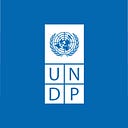Reviving the Paraguay River
“You don’t have to fear the river, you have to respect the river,” says Oscar Fariña, as he extends a hand to help tourists climb on his motorboat.
Oscar is the president of Bahía Tour, an association of boat operators who offer rides on the Paraguay River. It is often said that the city of Asunción turned its back on the river. Oscar and the other residents are facing it.
Many of the families settled in the area live in highly vulnerable conditions. They face the risks of floods and droughts linked to climate change. But the bigger challenge is pollution, which is affecting both people and the region’s rich biodiversity. Untreated sewage, and other pollution from Asunción, flows into the river, affecting the wetlands ecosystem.
Protecting wetlands
Coastal ecosystems are vital for flood control, absorbing carbon and producing fresh water. Protecting wetlands is crucial in the fight against climate change. According to data from the Ramsar Convention on Wetlands of International Importance, it is estimated that 64 percent have disappeared from the planet in the last century.
The Banco San Miguel and Bahía de Asunción Ecological Reserve is 300 hectares and hosts significant biodiversity.
“I began my relationship with the river at a very young age, I believe I learned how to swim before I learned how to walk,” says Oscar, who is now 63 years old. “We used to play around at the Banco San Miguel, there were just seven or eight neighbours back then, not this many people. It was all wetlands and forest.”
Nearly 300 bird species have been identified, making it one of the richest ecosystems in Asunción. It was declared as an ecological reserve in 2005, and it is acknowledged worldwide as an important passage for migratory birds.
These days Banco San Miguel is dotted with landfills. This untreated waste collects on the riverbed and bank and flows into the river. Burning garbage is common practice.
As the motorboat approaches the shore, Oscar slows down. “Before, we used to drink water from the river, now this is totally degraded. In 50 years it fell apart, it is full of plastic and garbage,” he says.
Rescue and recovery
Now authorities are taking action. The Ministry of Environment and Sustainable Development and the Municipality of Asunción, along with support from UNDP, are trying to clean up and restore the reserve. The project ‘Asunción Green City of the Americas — Pathways to Sustainability,’ is a rescue, recovery, and surveillance plan.
Working with residents, the boatmen’s association chaired by Oscar Fariña, has become a key partner in biodiversity conservation. The ‘Bahía Tour’ association, mostly made up of residents of the Asunción bay area, offers boat rides and bird watching tours.
Through the ‘Asunción Green City’ project, funded by the Global Environment Facility (GEF), local tour guides received training, and learned more about bird species common to the area.
A flock of mbiguás fly away in a V formation. “As kids we were always running after the birds, the Playerito Canela, we call it Chululú in Guarani. About 50 years ago we had huge flocks coming in, they covered the sun as they flew. Today, with the condition of the land, birds do not have a place to rest in the bay area,” Oscar says as he watches them go by.
In the last decade, the city has changed significantly. The shallow beaches in the reserve have been reconfigured and modified. Recent flooding of the Paraguay River has led to a considerable decrease in the population of shorebirds.
Reviving critical habitats
UNDP is working with the Ministry of Environment and Sustainable Development and the Ministry of Public Works and Communications, with support from the NGO Guyra Paraguay, on a plan to revive the critical habitats for these birds, especially the Playerito Canela.
It is evident that the Bahía de Asunción can only recover if everyone acts. So the project’s includes raising awareness of what is at stake and working directly with the local community.
“All of us in the boatmen’s association are very involved with the environment, we organize clean-ups and we always try to be informed,” says Oscar, as we approach the end of the boat ride. “I do not believe we can go back to how it was before, but I know we can try to improve.”
By Silvia Morimoto, Resident Representative, UNDP Paraguay
